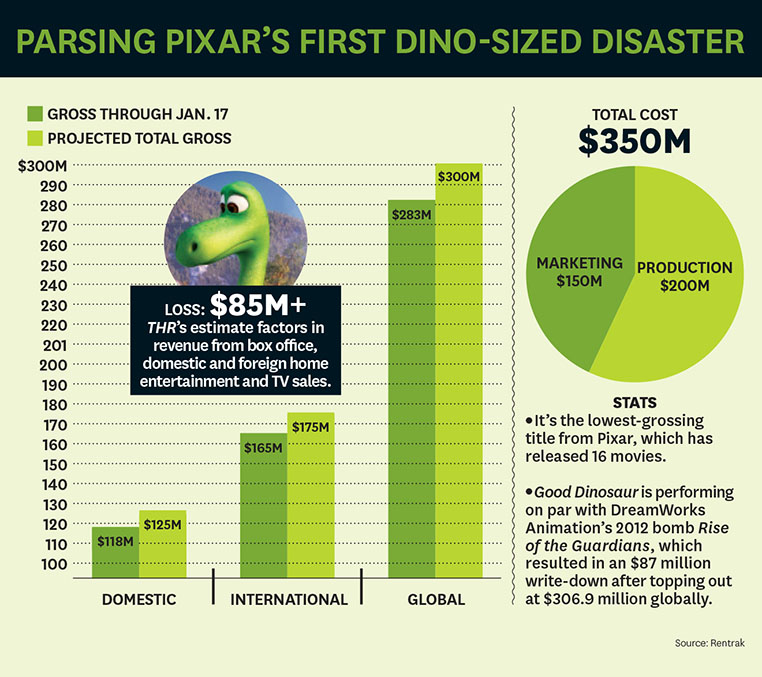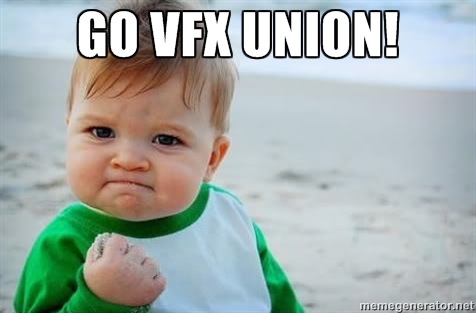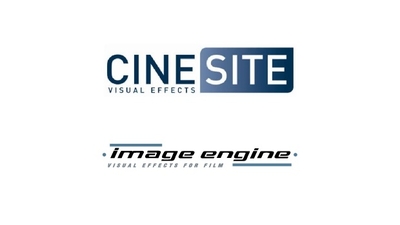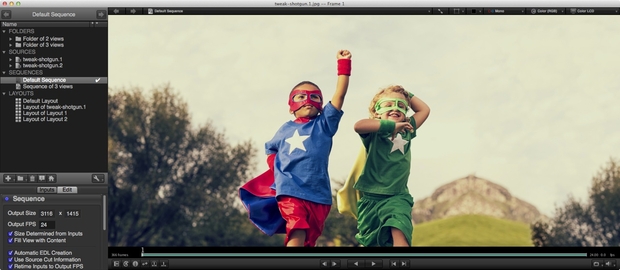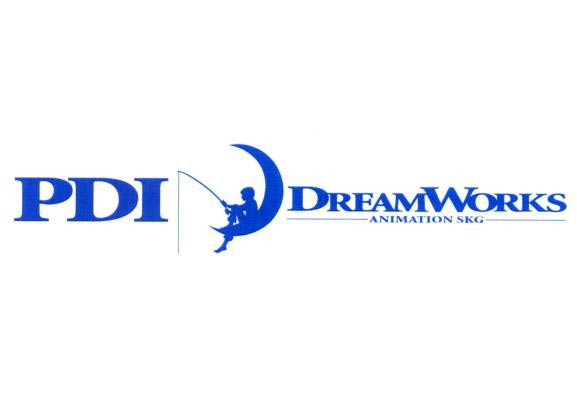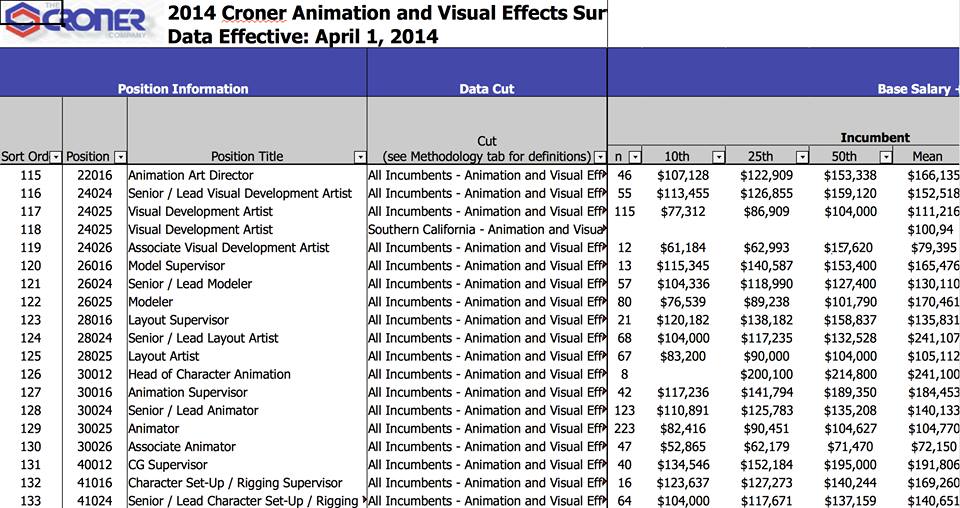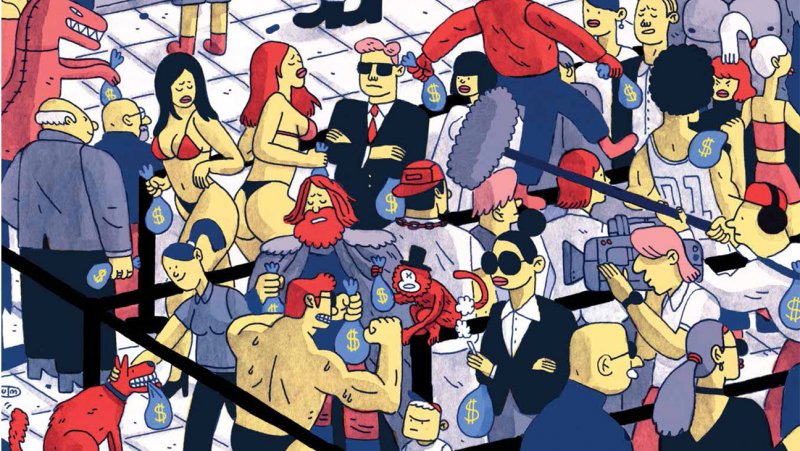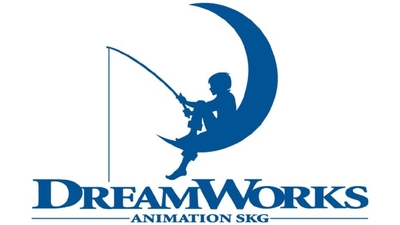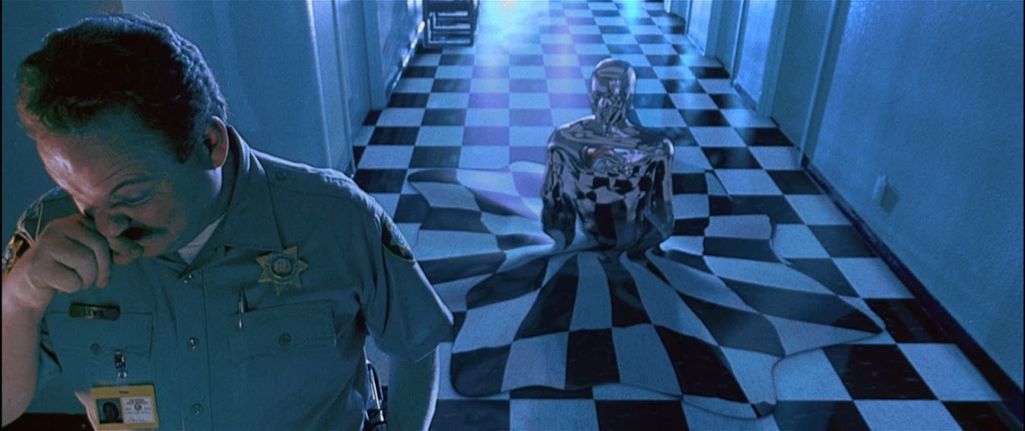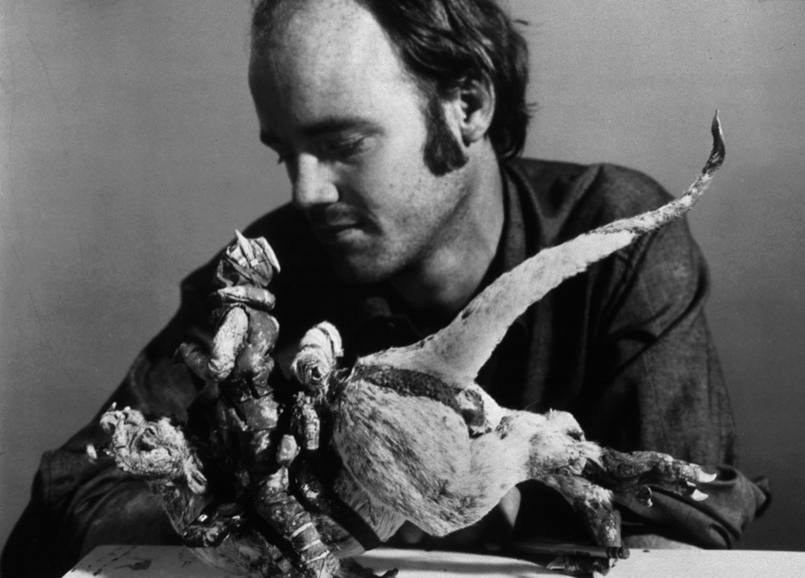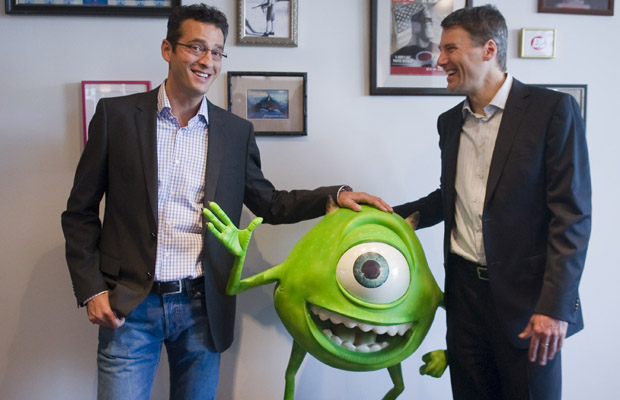Category: ves
Blue Sky Reaches Settlement in Hollywood Studio Antitrust Lawsuit
http://www.awn.com/news/blue-sky-reaches-settlement-hollywood-studio-antitrust-lawsuit
Blue Sky Studios has reached a settlement in a class-action lawsuit, Variety reports, alleging that the animation studio behind last year’s The Peanuts Movie and the Ice Age franchise and other companies violated antitrust laws by conspiring to suppress the wages of animation and VFX artists via non-poaching agreements.
The suit contends that the roots of the anti-poaching agreements go back to the mid-1980s, when George Lucas and Ed Catmull, the president of Steve Jobs’ then-newly formed company Pixar, agreed to not raid each other’s employees. Other companies later joined conspiracy, the suit alleges, including Sony ImageMovers, Lucasfilm and Walt Disney.
The plaintiffs have been seeking class certification. Their proposed settlement class includes certain animation and visual effects employees who worked at Pixar from 2001 to 2010; Lucasfilm from 2001 to 2010; DreamWorks Animation from 2003 to 2010; the Walt Disney Co. from 2004 to 2010; Sony Pictures Animation and Sony Pictures Imageworks from 2004 to 2010; Blue Sky from 2005 to 2010; and ImageMovers from 2007 to 2010.
RIP Leonard Nimoy
http://www.esquire.com/entertainment/tv/a33392/leonard-nimoy-what-ive-learned/?spr_id=1456_152373401
Best piece of advice I ever got was from John F Kennedy when I was driving a taxi in and out of the Hotel Bel-Air. He was a senator then. I was just out of the army and I needed to make some money, so I got to talking about the difficulty of making a living as an actor. And he said, “Just keep in mind, there’s always room for one more good one.”
Are the best directors tyrants?
http://www.bbc.com/culture/story/20141001-are-the-best-directors-tyrants
“When a film has got problems”, he says, “they’re usually little problems, but they build and build incrementally, and by the time you’re finished, there’s not much you can do about it. But if you’re like Fincher and you iron out these problems as you go along, it can save you. If you’ve got the money and the strength to do 50 takes, then do them.”
John Bruno – on realism, restraint, and adventure
http://www.theverge.com/2014/8/8/5982523/visual-effects-john-bruno-terminator-ghostbusters-interview
Who’s doing things right these days? What excites you right now?
Well, I’m prone to the work done by Weta [Digital]. The best thing I’ve seen this year is [Dawn of] the Planet of the Apes. It’s staggering. I called Joe Letteri at Weta and just said, “In the world of visual effects you are Caesar and I am but a chimp.” I swear to God I said that to him. The visual effects were so tactile, I don’t even know how to explain it. It was just immersive. That is so hard to do.
Meritocracy and the Peter Principle … or why some employees rise in the hierarchy through promotion until they reach the levels of their respective incompetence
https://www.investopedia.com/terms/p/peter-principle.asp
http://en.wikipedia.org/wiki/Peter_Principle
The Peter Principle is a special case of a ubiquitous observation: Anything that works will be used in progressively more challenging applications until it fails.
Applied to humans, the selection of a candidate for a position is based on their performance in their current role rather than on their abilities relevant to the intended role.
- The Peter Principle is an observation that the tendency in most organizational hierarchies, such as that of a corporation, is for every employee to rise in the hierarchy through promotion until they reach a level of respective incompetence.
- According to the Peter Principle, every position in a given hierarchy will eventually be filled by employees who are incompetent to fulfill the job duties of their respective positions.
- A possible solution to the problem posed by the Peter Principle is for companies to provide adequate skill training for employees receiving a promotion, and to ensure the training is appropriate for the position to which they have been promoted.
The Render-man song
http://www.reddit.com/r/vfx/comments/237tcf/render_man/
(To be sung to the melody of Piano Man)
It’s nine o’clock on a Friday
We’ve been here 40 hours straight
the client wants 10% more mystery
and then sent a 600 frame plate
They say “It looks great! Here’s a thousand notes
And the producers want this red thing less blue
And my niece likes cats
So we need some of that
And the deadline’s on Sunday at 2:00”
Render a frame, you’re the renderman
Render a frame tonight
Well, we’re all in the mood to be going home
so this time please render it right
Now, John over there is an industry vet
He’s been at it for 20 odd years
He’s a whole lot of fun
When the work day is done
But tonight he is almost in tears
He says, “Bill I belive this is killing me.”
As wires danced across someone’s face
“Well, I’m sure I would slap this damn movie star
If I could get out of this place.”
Now Paul is a VFX generalist
Who never saw his children or wife
And he’s talking with Scott, who’s still on that shot
And probably will be for life
And the interns are fixing up camera tracks
As the freelancers mutter and curse
And the boss says “You’re getting paid overtime
It could be marginally worse”
Render a frame, you’re the renderman
Render a frame tonight
Well, we’re all in the mood to be going home
so this time please render it right
We’re all still here on a Friday night
As the coffee pot starts a new brew
Mark eats a pannini
John’s crashing Houdini
And Jim waits for his renders to queue
And explosions erupt on our monitors
And the workstations smell like a zoo
And the kitchen’s asunder
And we sit and wonder
How the hell to make red things less blue
Render a frame, you’re the renderman
Render a frame tonight
Well, we’re all in the mood to be going home
so this time please render it right
Softimage Last Release Announcement
http://area.autodesk.com/softimagetransition
We regret to inform you that the upcoming 2015 release will be the last one for Autodesk® Softimage®, which is expected to ship on April 14, 2014. Autodesk will continue to offer product support until Apr 30, 2016. We will also provide any necessary hot-fixes and service packs to all customers, at no cost, until Apr 30, 2016. We understand that you will now need time to re-evaluate your production capabilities.
To help you, we are offering Autodesk® Subscription customers special no cost options to migrate to either Autodesk® Maya® or Autodesk® 3ds Max® while continuing to use Softimage in production. These options will be available until Feb 1, 2016. Upgrade paths are also available for customers who are not on Subscription. Although this decision is a difficult one, we do believe that by focusing our efforts we can better serve the needs of the media and entertainment industry and provide customers with better products, faster. Autodesk wants to continue its relationship with you into the future. We regret any inconvenience that this may cause, however we believe you will find our new transition product offerings very attractive.
MPAA latest anti-piracy move accidentally, completely screws Hollywood studios
“Congress has given the ITC broad authority to protect U.S. industries from unfair acts in importation,” said spokeswoman Kate Bedingfield, adding that if the government doesn’t recognize digital products as imports, “American businesses lose an important protection, which puts them at a significant international disadvantage.”
“In other words, emboldened by the MPAA’s filing, the (U.S.A.) visual effects workers are now in a position to use the big studios’ own arguments to compel the government to slap trade tariffs on those studios’ own productions in high-subsidy countries. Those arguments will be especially powerful because the MPAA made them to the very same governmental agencies that will process the visual-effects workers’ case.”
Union appeals to VFX employers to improve working conditions
https://www.bectu.org.uk/news/2095 A recent survey amongst VFX staff found high levels of dissatisfaction amongst this skilled group over working hours, workloads and work/life balance. Responding to the survey: 77 per cent of people knew someone who had recently left the industry over workloads, overtime and poor working conditions;81 per cent of people had felt pressured or bullied into working overtime for free on films;83 per cent of people said it was difficult, or very difficult, to raise a family whilst working in VFX What does the Charter call for? All overtime to be voluntaryAll overtime to be paidWorking Time Regulation opt-outs to be handled responsiblyRespect for caring responsibilitiesStatutory rights to daily rest to be met (eg 11 hour break between turns of duty)Statutory rights to weekly rest to be met (eg no to working on 12 consecutive days)Better care for night workersRespect for the rights of trade union members.
John Knoll on VFX industry
DS: You cannot talk about visual effects these days without talking about the rough business climate. There seems to be a tug of war between the studios and the visual effects houses, with considerable finger pointing and frustration. Are there any answers? Is there much more shake out to come? Where do you see things headed?
JK: All in all, the picture is a little grim right now. Unfortunately, there are a lot of companies that engage in really foolish and short sighted business practices. You can’t just blame the studios for wanting to pay less and less for the work.
What’s happening is that when a low target number goes out, somebody says, “Yes.” A lot of times companies are saying “Yes” to a number that they know is going to be below their cost. They know they are going to lose money, for a variety of reasons. Sometimes they don’t know that’s what they are doing.
They completely misunderstood what it is they are bidding on and their bid is based on a wrong assumption. They are going to take it in the shorts because of their naivety. Sometimes they are doing it for strategic reasons, thinking, “We will buy this first one and then…”
I’m Phil Tippett, stop-motion animator, director, dinosaur supervisor. And the status of VFX.
http://www.reddit.com/r/IAmA/comments/1r5h9b/im_phil_tippett_stopmotion_animator_director
LA Animator:
What, in your opinion, is broken in the current VFX workflow? What things would you like to most see change?
Endless revisions?
Disconnect between Director and artists/VFX facility?
Bidding process? etc?
Phil Tippet:
In the olden days, producers knew what visual effects were. Now they’ve gotten into this methodology where they’ll hire a middleman – a visual effects supervisor, and this person works for the producing studio. They’re middle managers.
And when you go into a review with one of them, there’s this weird sort of competition that happens. It’s a game called ‘Find What’s Wrong With This Shot’. And there’s always going to be something wrong, because everything’s subjective. And you can micromanage it down to a pixel, and that happens all the time.
We’re doing it digitally, so there’s no pressure to save on film costs or whatever, so it’s not unusual to go through 500 revisions of the same shot, moving pixels around and scrutinizing this or that.
That’s not how you manage artists. You encourage artists, and then you’ll get – you know – art. If your idea of managing artists is just pointing out what’s wrong and making them fix it over and over again, you end up with artists who just stand around asking “OK lady, where do you want this sofa? You want it over there? No? Fine. You want it over there? I don’t give a fuck. I’ll put it wherever you want it.”
It’s creative mismanagement, it’s part of the whole corporate modality. The fish stinks from the head on down. Back on Star Wars, Robocop, we never thought about what was wrong with a shot. We just thought about how to make it better.
This resonates with the VES 2008′ Status Of VFX white-paper written by Renee Dunlop, Paul Malcolm, Eric Roth for the Visual Effects Society in July 2008. A critical effort in educating the production world on the status of the current use of visual effects:
“While digital visual effects have opened the door wide to tremendous opportunity, those working in the
pipeline are still jostling to claim their place in the process.
Though it is understandable that different crafts want to protect their own territory, safeguarding
the old ways of doing things often gets in the way of creating partnerships.
· An oft-heard concern raised by Art Directors and Production Designers has been a lack
of consistency throughout the pipeline and the impact new technologies used by VFX
artists will have on their work. However, the fact is that part of a VFX Supervisor’s
responsibility is to maintain communication with DPs and Art Directors to ensure that
the final product reflects what those parties wanted.
· Often it is difficult to determine who is in charge of certain creative decisions that
overlap craft boundaries.
· There are cultural and generational factors to consider. A lot of Directors don’t want to
commit to what the shot’s going to be until they’re in post. However, many younger
Directors are very open to manipulating images early on.
· On many, if not most, projects, Art Directors and DPs are often on another project and
no longer accessible to VFX artists after the shoot. Unfortunately, this is when VFX
Supervisors are finalizing their work in post, which impacts the work done earlier by
other craftspeople.
Yet another factor is time. As studios continue to push for shorter production periods, putting
together the perfect pipeline becomes increasingly difficult. As Alex Funke, Visual Effects
Supervisor and DP says:
“In a perfect world, the live action would be shot first, the miniatures would
shoot second and then the digital effects would assemble and enhance the
whole mix. But it doesn’t usually happen that way. It’s more likely that the
miniatures will be shooting along with the live action, and the digital artists will
be trying to get rough assemblies of shots done so they can find out just how
much work they will have to do.””
…
“Some of these cultural changes need to begin within the visual effects community itself.
As VFX Supervisor and former Visual Effects Society Board Chair Jeffrey A. Okun noted:
“In our earnest desire to get a seat at the ‘adults table’ of the business, we have
been engaged in a 30-year publicity campaign to make everyone aware of what
we do and how we do it. In this process we have focused on the success stories
and hidden away the terrible truth of how we got to those successes. As far as
the public, most directors and producers are concerned, they are not at all aware
of how time and hands-on intensive the process really is. What we need to do is
begin telling the painful truth.””
…
“Visual effects artists need to bring other practitioners into the VFX production process as part of
the education process. Unfortunately, this often proves difficult because of long-standing
territorial issues. As productions are shared throughout the international production community,
consistency and quality can be difficult for Department Heads to monitor.”
…
“As anyone with even a modicum of experience in the entertainment industry knows, nothing
ever changes unless producers can be convinced that it’s in their best economic interest. That
said, visual effects professionals have a very convincing argument to make with producers
about the need to re-evaluate the impact of VFX on the bottom line.
Roughly 20 out of the top 25 highest grossing films of all time are visual effects films. Visual
effects typically take 25-50% or more of an entire show’s budget, an estimate that is often
admitted as low. In animated films, that number is far higher. Clearly, the work, the creative
product, and the practitioners of the visual effects industry all have an enormous impact on the
producers’ bottom line and the show’s eventual success in the marketplace.
Essentially, if visual effects artists are included in decision making up front, productions costs
will drop because the VFX artists can help streamline the production path in telling the
Director’s story. They can be instrumental in offering more choices that help guide and
generate better creative and production decisions and, therefore, a more efficient production
schedule.”
Pixar Canada shuts its doors in Vancouver
http://blogs.theprovince.com/2013/10/08/pixar-canada-shuts-its-doors-in-vancouver/


